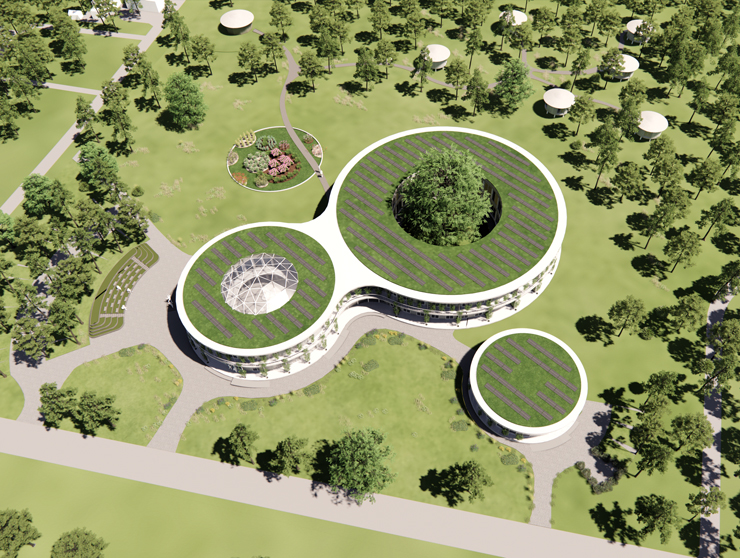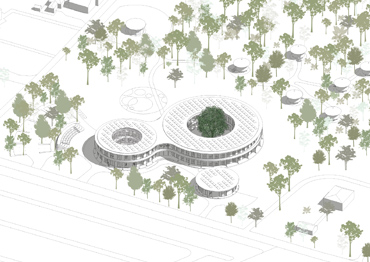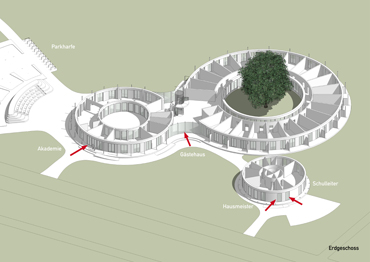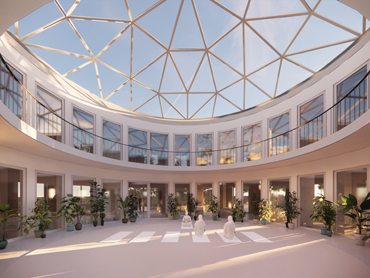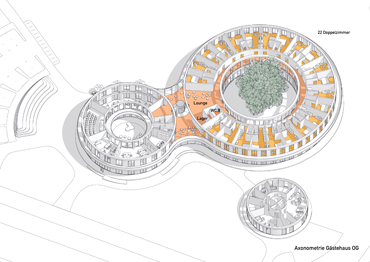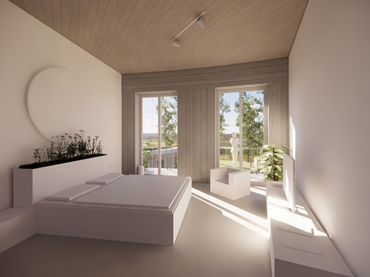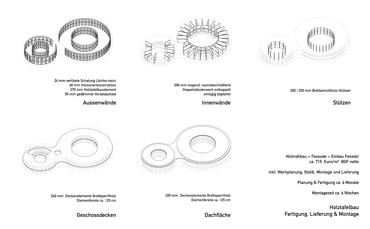morePlatz
architecture / urbanism / art / office / publications / contact deutsch
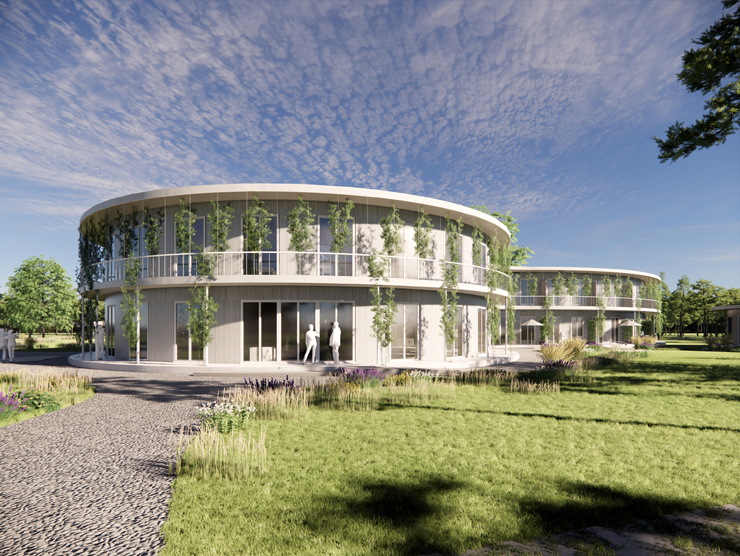
|
Our task is to design a building for a new type of academy, which should make three essential areas of a sustainable lifestyle tangible and learnable: * Nutrition - preparing and cooking food and eating together; The building should give space to these ambitions and be supplemented by a guest house. |
The hidden location in a wooded area away from cities and roads offers good conditions to switch off from everyday routine. For the architecture, too, it is an almost context-free piece of land that allows a great deal of freedom. The large oak tree roughly in the middle of the property provides us with this anchorage and the center around which we are developing the academy. It is a flat, two-storey ensemble of circular wooden buildings. The green surrounding balconies and terraces create a transition from the house to garden and landscape. |
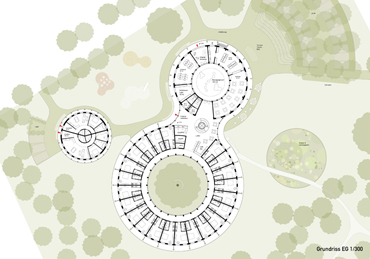 |
|
|
The design consists of two round, 2-storey buildings that are connected to each other, supplemented by a residential building for staff and school management. The main entrance for visitors is at the intersection between the two buildings in a glazed lobby with stairs and lift, from which both parts of the building can be accessed. |
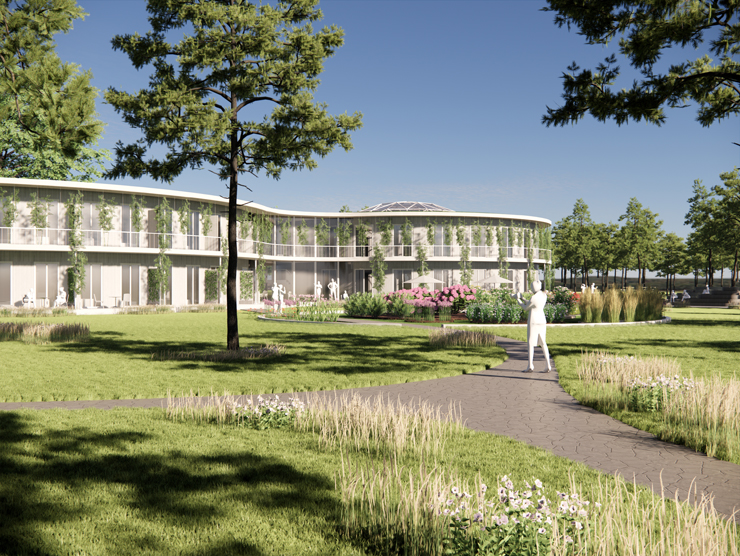
The smaller building houses the Academy rooms, which are arranged around the central double-height room. The dome room itself can be used in many ways, e.g. as a sports and exercise room, for readings or concerts or for academy festivals. The kitchen is designed for cooking together and workshops for up to ten participants. The dining room is also twice as high - there is a large terrace in front of the dining room and a common area with an open-air grandstand. Meeting and multi-purpose rooms with flexible furnishings are located on the upper floor and, depending on occupancy, can also be used by smaller groups for yoga classes or sports. |
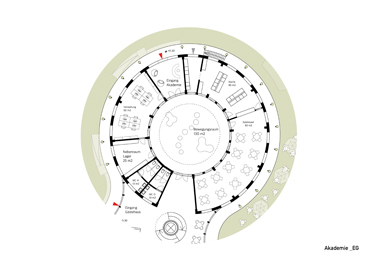 |
|
|
There is a basement under the small building where technology, storage and changing rooms etc. are housed. Starting with the base plate, the entire shell is made of wood panel construction. The cross laminated timber ceilings are visible and give the rooms a warm and cozy atmosphere. The facade is clad vertically with a natural larch formwork. The natural weathering of the untreated material produces a silvery-grey appearance within a relatively short period of time, which blends in well with the landscape. |
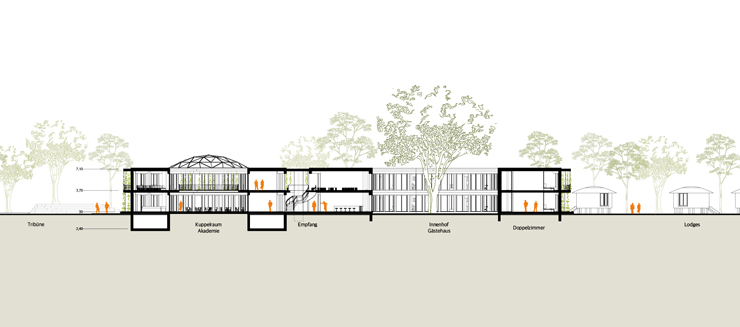
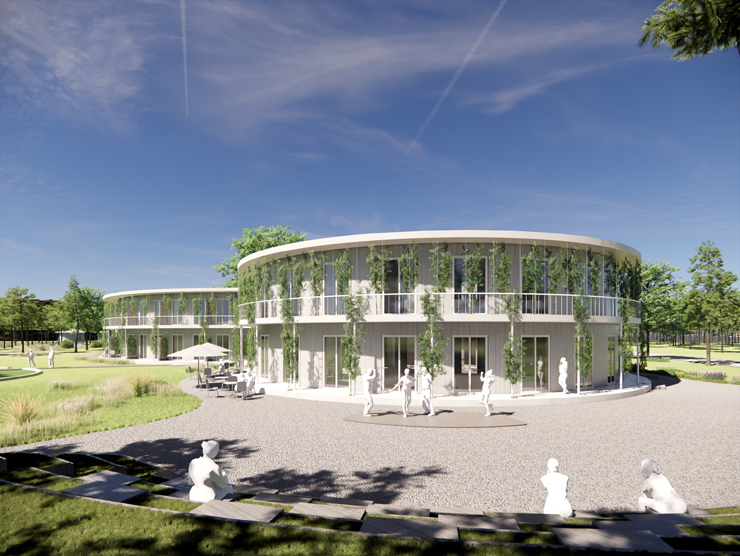
|
|
The larger of the two houses, the guest house, is a ring whose center is the large oak tree - the guest rooms are grouped around the green inner courtyard, all of which are oriented outwards in the same way towards the landscape. Access leads via the arcade in the inner courtyard. The division of the rooms is based on the construction grid, which allows a certain flexibility of use, e.g. by merging rooms. All rooms are double rooms with bathroom and cooking facilities, which have a green balcony or terrace in front of them. |
The 1 storey annexe is for the Headmaster's and Caretaker's apartments, it could also be an extension of the guest house and offer special accommodation. The landscape and open space design develops, like the houses, starting from the oak from the inside to the outside. In the center is the oak tree and the yard. |
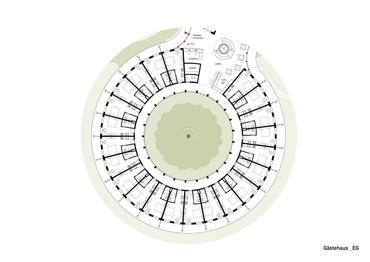 |
|
|
They are densely greened with climbing aids from below with evergreen or seasonal climbing plants, so that over time the houses merge more and more with the forest; e.g. ivy, vine, clematis or wisteria. The plants can root directly in the ground through a recess in the EG plate and be watered by an integrated system. The greenery on the surrounding trellis creates an organic connection with the environment, which every guest of the academy can enjoy on their own terrace or balcony. |
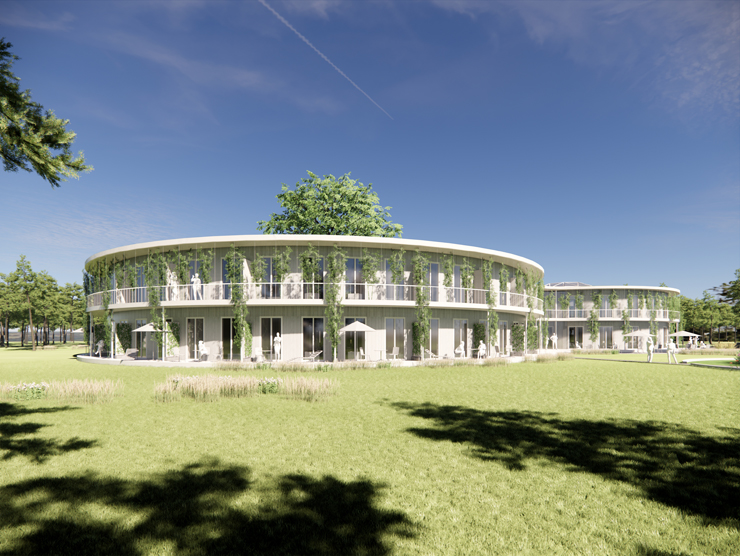
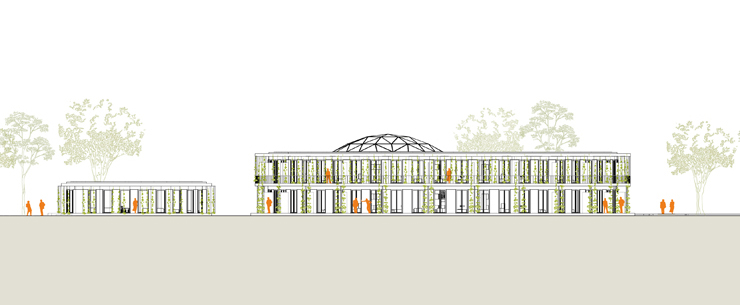
|
|
On the ground floor, north of the dining room and kitchen, there is a forecourt as a stage and a small grandstand, which is made up of excavated earth from the basement and planted. It forms a green screen opposite the parking lots. From there, a branching path leads through the meadow and herb and vegetable bed for the kitchen towards the edge of the forest, where a few wooden huts are loosely arranged. These elevated 'lodges' are additional guest rooms with their own unique atmosphere, more reminiscent of tree houses and camping. Between these lodges the path leads past the domestic animals - goats, rabbits and/or bees - into the forest. |
The two connected components are built first. Construction will require some trees to be felled near the oak tree - these will be replaced as new planting on the northeast corner of the property between the parking lots. The additional building for the apartments can be built at the same time or as an extension at a later date. In this case, the guest house would start with fewer rooms, and the headmaster's flat would be on the ground floor. Construction & Sustainability
|
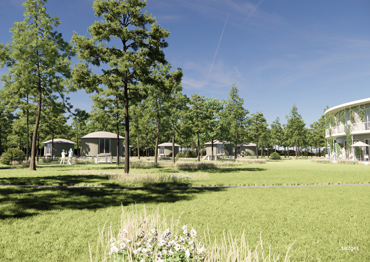 |
|
|
The round house with its small envelope is resource-friendly, the wooden construction as a lightweight construction made of renewable materials acts as a CO2 storage for a climate-neutral building. The prefabrication offers a low proportion of gray energy that has to be used in production and guarantees a fast construction time and a clean construction site. The wooden components are easily recyclable and can be easily reused or disposed of in an environmentally friendly manner. morePlatz: Johannes Schele, Caro Baumann, David Gothe |
